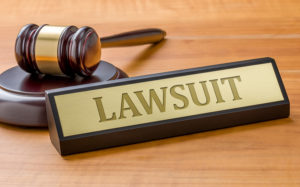As children’s wish lists grow to include the most popular toys on the market today, parents unknowingly shop for new items that may be hiding toxic chemicals in their makeup. A study by an environmental group found traces of dangerous substances, such as antimony, arsenic, mercury, cadmium, cobalt, and lead in children’s toys, as well as polyvinyl chloride (PVC) plastic in 50% of toys tested. What this means for children is that every time they pick up their favorite toy, they could be exposing themselves to toxins.
Lead
There is no safe amount of lead for children. Even minute traces of lead affect children’s ability to learn, harming brain development and causing developmental problems such as lowered IQ, shorter attention spans, and other learning disabilities.
Lead is often an ingredient in the paints toys manufacturers use outside of the United States, as well as on older toys manufactured before the U.S. banned lead in paints. The U.S. hasn’t yet banned lead in plastics, and manufacturers use it in toys today. When lead encounters sunlight, air, and certain detergents, the chemical bond between lead and plastic dissolves, forming dust that your child can inhale.
PVC
PVC is a known human carcinogen, causing cancer, birth defects, developmental delays, immune system abnormalities, diabetes, and other illnesses. PVC is hazardous during its production, use, and disposal – giving it the nickname “poison plastic.” PVC releases dangerous chemicals such as mercury, ethylene dichloride, phthalates, dioxins, and furans throughout its lifecycle.
You can avoid toys with PVC by taking safer alternatives such as those labeled “PVC-free,” “phthalate free,” or screening the toys you buy your child based on the list of known toys to be toxic, found here.
Mercury
Mercury is a metal often found in inks and adhesives and can take different chemical forms. The most dangerous form of mercury is methylmercury, which effects brain development. Children are more sensitive to mercury than adults are, and they can suffer attacks to the nervous system, brain damage, and kidney damage. California restricts the amount of mercury that can be in the paints of consumer products, but it doesn’t address imported toys.
Arsenic
Arsenic naturally occurs in groundwater, as well as in inorganic forms that are more toxic. In children’s toys, arsenic is sometimes an ingredient in dyes in plastics and textiles, although how it gets there is still unknown. Children exposed to arsenic can suffer from lung, bladder, and skin cancer, as well as skin irritation, cardiovascular diseases, disruptions in fetal development, brain defects, and hormone disruption. The toy industry has established a 25-ppm limit for arsenic in toy production, but tests run by HealthyToys.org still found it at levels exceeding 100 ppm in 2.2% of toys tested.
Cadmium
Cadmium is a cheap alternative to lead and some toy manufacturers use it to strengthen metal alloys in toys. Like lead, cadmium is a known carcinogen and is highly toxic. Found particularly in children’s jewelry, toy paint coatings, and toys with batteries, exposure to cadmium can result in many serious disorders. Pregnant women exposed to cadmium bore children who suffered birth defects like low birth weight and smaller heads. Researchers have also found links between cadmium and learning disabilities in children, as well as several types of cancers.
Join the Battle Against Toxins in Toys
If your child has suffered due to exposure to harmful chemicals in children’s toys, you may be eligible for legal compensation. Thousands of parents all over the world are fighting to protect their children against harmful toxins and are filing lawsuits against toy manufacturers who break the rules.
The lawyers at Gomez Trial Attorneys are dedicated to defending victims of defective merchandise, dangerous toys, and other harmful household products. You and your child don’t have to go through this alone. Contact us for compassionate, experienced representation today.
Sources:
https://www.watoxics.org/files/ToyDatabaseFactSheetweb.pdf
https://www.ecocenter.org/healthy-stuff







